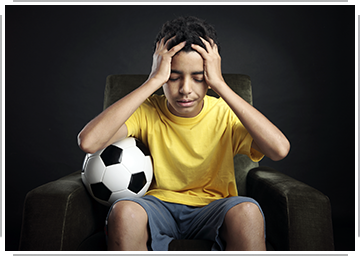Symptom Subtleties
 Courtesy ThinkStock: stokkete |
The subtleties of symptoms are not always easily identifiable, but are at the core of proper concussion management. Duration, type, and number of symptoms are all important to proper assessment and diagnosis of concussion. However, some symptoms may be more important than others. For instance, nausea and severe headache could indicate something worse than a concussion, such as bleeding in the brain. The length of time of recovery from a concussion may be concerning because it will keep the student out of both play and learning activities. |
|
Also, many athletes may have three to five symptoms before getting a concussion. Teenagers sometimes have headaches and trouble focusing for reasons other than a hit on the head. It's crucial not to count these pre-injury symptoms in your diagnosis. You must tease out which symptoms are part of the injury and which are not. There is consensus in the field that athletes with post-concussion symptoms should not Return to Play until they are a-symptomatic, have passed balance and cognition assessments, have been cleared by a licensed health care professional, and have completed a gradual and supervised Return to Play progression. |
 Courtesy ThinkStock: Photodisc |
